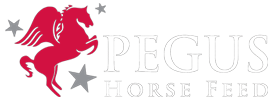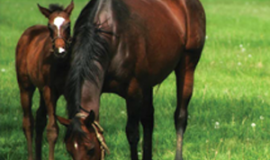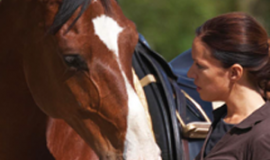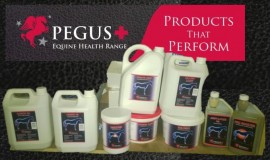January 2015- Vitamin A
Vitamin A comes in two forms – as retinol, of animal origin, or as beta-carotene which is of vegetable origin. As a precursor of vitamin A, beta-carotene needs to be activated in the body. Retinol is usually not included in typical horse feeds, while beta-carotene is found in appreciable amounts in roughages and in small amounts in grains other than maize.
The biological activity of the various vitamin A compounds and precursors differ. One international unit (IU) of vitamin A is defined as the biological activity of 0,300 micrograms (µg) of all-trans-retinol. For beta-carotene 1 mg is equivalent to 400 IU vitamin A.
Role of vitamin A in the body
Vitamin A is known to be important for normal night vision. It functions also in cell differentiation and, as a result, plays crucial roles in reproduction and embryogenesis. In addition, vitamin A is important for maintaining the immune response to infection.
Beta-carotene functions as a precursor of vitamin A. However, it also has specific functions as beta-carotene in a number of tissues and organs including the fat, skin and ovary. The latter primarily in the corpus luteum where it is involved in the control of progesterone secretion and the control of ovulation, embryo implantation and pregnancy maintenance. These activities are impaired by inadequate beta-carotene and cannot be corrected by vitamin A.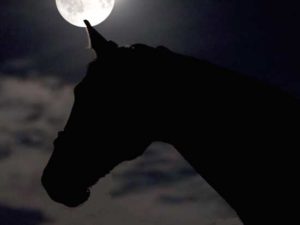
Requirements for vitamin A
The vitamin A requirements for different types of horses are not well defined. NRC 2007 gives the following minimum requirements for vitamin A:
Adult horses at maintenance: 30 IU per kg body weight
Adult horses in training: 45 IU per kg body weight
Stallions in the breeding season: 45 IU per kg body weight
Young growing horses: 45 IU per kg body weight
Pregnant and lactating mares: 60 IU per kg body weight
Vitamin A in horse feeds
Compound feeds for horses normally have added vitamin A as retinol equivalent to 7000 – 15000 IU vitamin A per kg. Cereal grains are low in beta-carotene except maize that contains about 6 mg per kg (2400 IU vitamin A).
Forages are rich in beta-carotene. The greatest concentrations are found in pastures. Such factors as degree of maturity, conditions at harvest and length of storage will influence beta-carotene concentrations in forages. This varies greatly, from 30 to almost 400 mg beta-carotene per kg dry matter (12000 – 160000 IU vitamin A). The lowest concentration is found in mature grass hay.
Pegus PC-Horse and vitamin A
Pegus PC-Horse calculates the requirement for vitamin A for horses in all physiological states. The program also holds the vitamin A concentrations of all feedstuffs in the feed list. You will be warned by the program if vitamin A in your horse rations is either too low or too high.In addition, PC-Horse differentiates between vitamin A as retinol or as beta-carotene. Too much vitamin A as retinol will trigger a warning that vitamin A is too high. Too much vitamin A as beta-carotene will not result in a warning, as beta-carotene is a precursor of vitamin A, and the body will adjust its conversion to active vitamin A according to needs. This means that there is no danger of overdosing beta-carotene.
This article was originally written by Dr. Day Austbø.
For more information on formulating diets for your horse or pony contact Pegus Horse Horse info@pegus.ie .
Or alternatively call or Free phone Helpline R.O.I.= 1800-378463 UK = 0800 011 4182
www.pegus.ie
